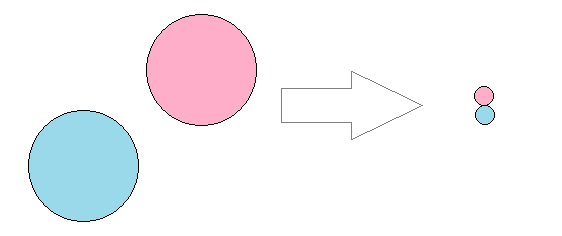When an electron and a positron collide, we get what’s called an electron-positron annihilation. The electron and the positron disappear, and a gamma-ray photon takes their place.

This was briefly touched upon in the chapter about electron-positron pair production.
In the physics laid out in this book, matter is never created nor destroyed. It is merely transformed. In the case of electron-positron pair production and annihilation, matter is being converted between the open and closed state.
Positrons are highly reactive. They combine readily with electrons to form gamma-ray photons. However, this does not prevent them from reacting with other particles as well. In the absence of an electron, the positron can react with atomic nuclei. It can produce transmutations and mass condensation.
Conventional theory, on the other hand, sees something entirely different in electron-positron pair production and annihilation. It sees the creation and destruction of matter.
This line of thinking has been extended to all kinds of matter, and has given rise to the idea of antimatter.
For every bit of conventional matter, there exists an antimatter. There’s the anti-proton and the anti-neutrino. There are even anti-atoms made up of anti-particles in the same way that regular atoms are made up of regular particles.
Excited about this idea, people have tried to produce these anti-particles in laboratories, and they have succeeded, at least to a certain extent.
Various types of antimatter have been produced, and true to theory, these bits of antimatter always disintegrate into gamma-ray radiation when in contact with regular matter.
However, all of this can be explained just as well with the theory laid out in this book.
What has been produced are merely extremely unstable particles that naturally disintegrate into gamma-rays when in contact with regular particles.
As for detectable neutrinos and anti-neutrinos, these are highly charged neutrinos with sufficient energy to be detected. When a positively charged neutrino hits a negatively charged neutrino, they cancel out their charges, and their energy is transferred to a nearby zero-point photon.
The fact that highly unstable particles can be created in a lab, and neutrinos can be excited to such an extent that they are detectable, does not prove the existence of antimatter. It merely demonstrates that it is always possible to produce such particles, given enough energy to do so.
This Post Has 0 Comments